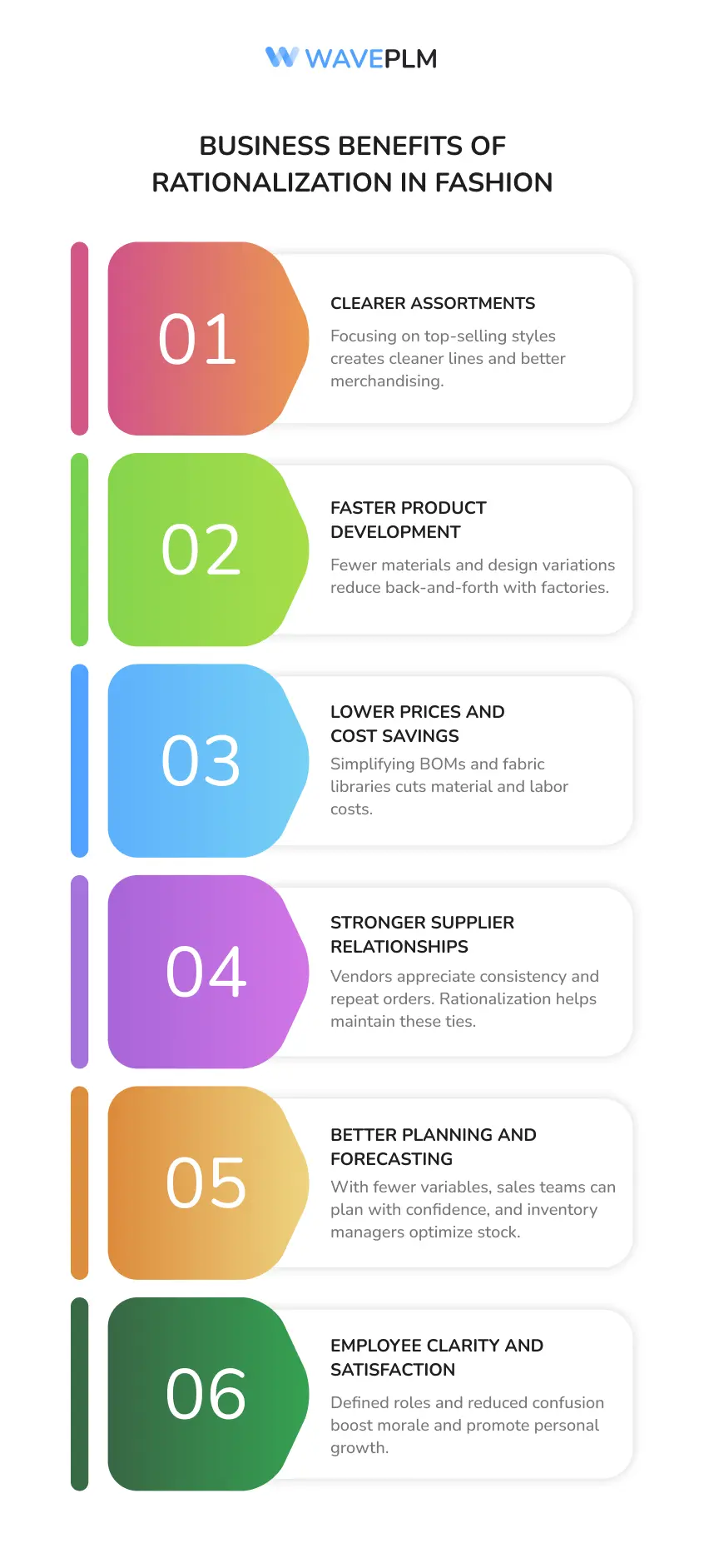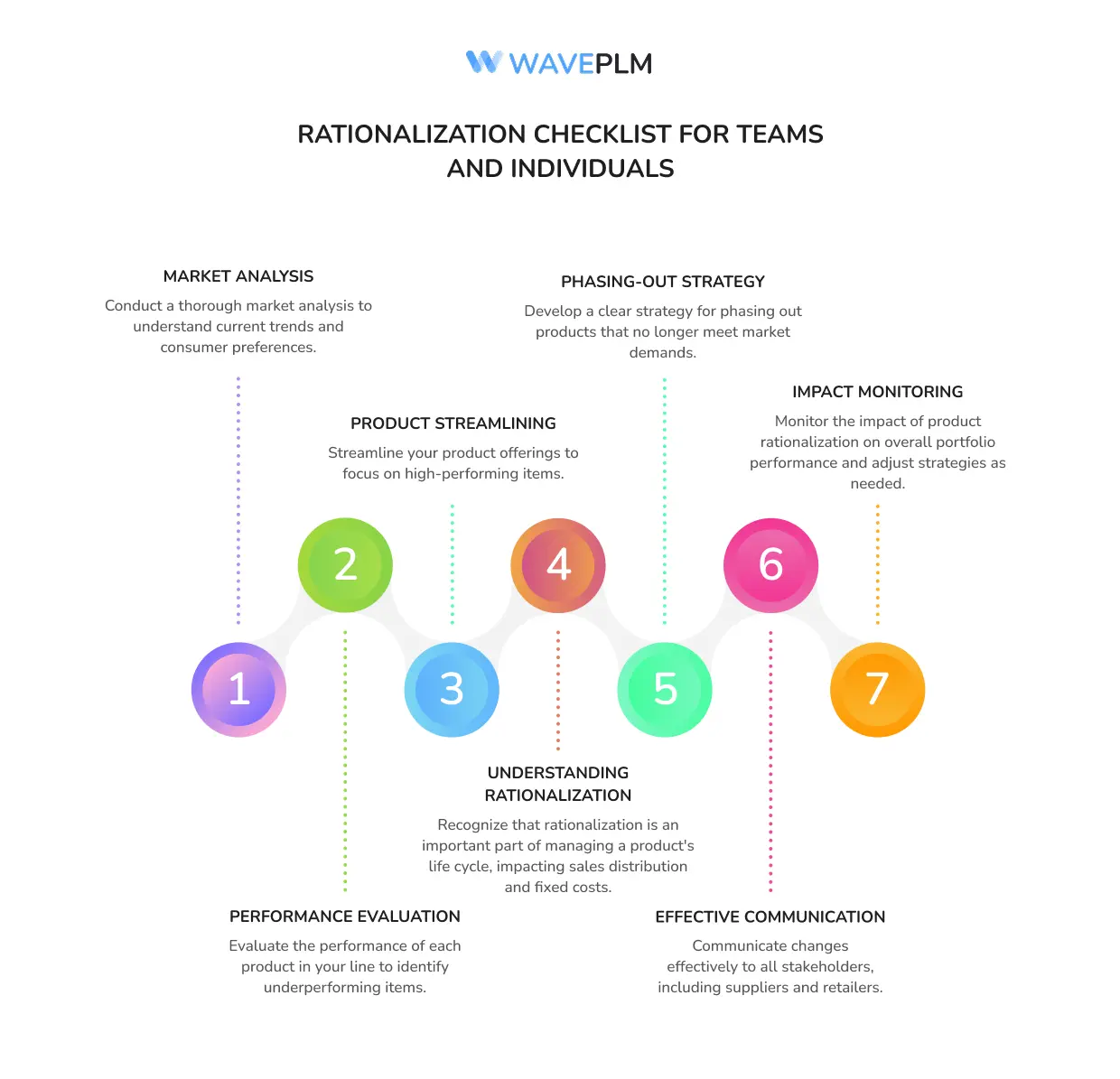
In today’s dynamic and emotionally charged fashion industry, rationalization has evolved from a technical fix into a powerful fusion of psychological awareness, emotional insight, and strategic decision-making. Modern fashion brands face increasing complexity—shorter trends, tighter margins, faster production. Rationalization offers an opportunity not just to optimize operations, but to reshape them with clarity and purpose.
By integrating key concepts from market structure and financial models, fashion brands can enhance their operational efficiency and calculability.
Fashion teams that embrace rationalization don’t simply cut costs. They cultivate focus. They streamline chaotic product lines into coherent assortments that reflect clear brand DNA. They build stronger relationships internally and externally—while aligning their actions with deeper psychological principles like defense mechanisms and cognitive dissonance. This article explores the rationalized definition, its psychological foundations from Sigmund Freud, and how brands are using PLM software to build resilient, efficient, and emotionally intelligent apparel development processes.
Table of Contents
- Understanding Rationalization
- Rationalized Meaning in Fashion
- Rationalization as a Defense Mechanism
- Emotional Drivers Behind Rationalization
- How Rationalization Connects to Mental Health
- Business Benefits of Rationalization in Fashion
- PLM Software: Enabler of Rationalization
- Examples of Rationalization in Action
- Rationalization and Personal Growth in Fashion Teams
- Rationalization FAQ
- Rationalization Checklist for Teams and Individuals
- Conclusion Rationalization: Smarter Fashion, Healthier Mindsets
Understanding Rationalization
Rationalization is the process of constructing logical and structured explanations for actions or decisions that may otherwise cause guilt, discomfort, or confusion. In a business setting, this usually involves simplifying operations, standardizing systems, and removing unnecessary steps. In a psychological context, rationalization reflects how individuals cope with uncomfortable truths, mistakes, and internal contradictions.
Sigmund Freud, the father of psychoanalysis, described rationalization as a defense mechanism—a way for the ego to protect itself from anxiety by justifying choices after the fact. In fashion, brands do the same. They build rational arguments around creative or commercial decisions that may not be delivering value.
Rationalized Definition (Business Context)
Rationalization is the strategic simplification of complex processes to improve efficiency, reduce waste, and focus on higher-value outcomes.
Rationalization is an important part of managing a product’s life cycle, impacting sales distribution, fixed costs, and the overall portfolio effect on the company’s products.
Definition of Rationalisation
Rationalisation means restructuring and organizing systems logically to remove inefficiencies and promote better performance.
Fashion teams must understand both the emotional and operational dimensions of rationalization to use it effectively.
Rationalized Meaning in Fashion
Fashion thrives on creativity, but without structure, creativity can create chaos. That’s where rationalization steps in. It ensures every design, fabric, or supplier serves a purpose. Rationalization in fashion mirrors how individuals streamline their everyday life to manage emotional discomfort and avoid deeper personal issues.
|
Fashion Area |
Rationalized Action |
|---|---|
|
Product Range |
Remove redundant SKUs and streamline assortments |
|
Standardize materials, reduce custom fabric dependency |
|
|
Design Process |
Limit collections to best-selling silhouettes and finishes |
|
Production Cycle |
Use repeatable templates to reduce lead time |
|
Vendor Relationships |
Prioritize reliable, cost-effective suppliers |
|
Communication Flow |
Automate internal approvals and reduce cross-team friction |
Rationalization occurs when fashion companies intentionally shift from reactive decision-making to structured planning. It aligns the business model with real consumer behavior and emotional needs.
Rationalization as a Defense Mechanism
Rationalization in fashion often originates from cognitive dissonance—the mental discomfort that occurs when actions clash with beliefs. For instance, a brand may market itself as sustainable but continue overproducing due to fear of stockouts. Teams justify this contradiction with data or market speculation.
This is emotional logic in action. Rationalization shields teams from guilt, blame, and responsibility, allowing them to defend their actions and maintain self-respect. But over time, unaddressed rationalizations can block innovation, create inefficiency, and hurt morale.
Real-World Defense Behaviors in Fashion:
- Launching a complex collection “for brand visibility” when it’s driven by creative ego
- Ordering excessive units and blaming external trends when the design didn’t connect
- Overstaffing departments and saying it’s “for growth” instead of acknowledging poor planning
Recognizing these psychological responses helps companies introduce healthier coping strategies and better performance.
Emotional Drivers Behind Rationalization
Fashion is personal. That’s why emotions often override logic. Here’s why fashion professionals rationalize:
- To protect ego after poor product launches
- To justify sunk costs and bad investments
- To avoid blame and preserve team harmony
- To maintain a positive self image under constant scrutiny
While rationalization can provide immediate emotional relief, it may hinder deeper healing required for long-term emotional well-being.
Example:
A creative director pushes a style forward claiming “it’s what the market wants.” In reality, they feel emotionally attached to the design. They’re using rationalization to mask deeper emotions.
Unchecked, this behavior leads to negative consequences: bloated inventories, broken supplier trust, and burnout.
How Rationalization Connects to Mental Health
Rationalization can ease psychological discomfort, but over time, it becomes a barrier to personal growth and team well-being.
When teams constantly justify poor outcomes, they:
- Avoid confronting root causes
- Suppress difficult emotions
- Delay improvements
Replacing rationalization with healthier alternatives—like honest reflection, data reviews, and team feedback—supports better mental health and stronger relationships.
Companies that normalize transparent decision-making reduce stress, lower turnover, and empower smarter risk-taking.
In therapy, a patient may use rationalization to avoid confronting difficult emotions, which can impede their progress and personal growth.
Business Benefits of Rationalization in Fashion
Strategic rationalization can unlock enormous value in apparel development.
1. Clearer Assortments
Focusing on top-selling styles creates cleaner lines and better merchandising.
2. Faster Product Development
Fewer materials and design variations reduce back-and-forth with factories.
3. Lower Prices and Cost Savings
Simplifying BOMs and fabric libraries cuts material and labor costs.
4. Stronger Supplier Relationships
Vendors appreciate consistency and repeat orders. Rationalization helps maintain these ties.
5. Better Planning and Forecasting
With fewer variables, sales teams can plan with confidence, and inventory managers optimize stock.
6. Employee Clarity and Satisfaction
Defined roles and reduced confusion boost morale and promote personal growth.

PLM Software: Enabler of Rationalization
PLM software enables teams to apply rationalization systematically, not reactively. With data-driven insights, brands move from emotional to evidence-based decisions.
Engaging in applications rationalization during mergers and acquisitions can enhance operational efficiency and alignment with business objectives.
Key PLM Features That Support Rationalization
|
PLM Feature |
Rationalization Impact |
|
Central Product Data |
Detects duplication across categories |
|
Fabric Usage Analytics |
Flags rarely used or overlapping materials |
|
Workflow Tools |
Reduces unnecessary approval cycles |
|
Tech Pack Templates |
Encourages reuse and consistency |
|
Costing Dashboards |
Highlights unprofitable styles and vendor discrepancies |
With PLM, brands rationalize process, not just products. The result? Fewer excuses, more strategic focus.
Examples of Rationalization in Action
- A premium outerwear label consolidated 600 SKUs into 320, improving margins and brand clarity.
- A handbag brand unified all strap trims, reducing supplier orders by 50%.
- A casualwear company replaced 22 fabrics with 5 standards, simplifying sourcing and reducing errors.
- A heritage brand introduced a cross-functional PLM system and reduced design-to-sample time by 30%.
These outcomes are possible when rationalization is supported by tools, trust, and psychological insight. These examples illustrate how rationalization is often an attempt to justify behaviors driven by deeper instinctual impulses.
Rationalization and Personal Growth in Fashion Teams
Rationalization isn’t only for companies—it’s a chance for personal and professional reflection.
Addressing rationalization can enhance an individual’s ability to achieve true insight into their emotional and behavioral issues, fostering personal growth.
Benefits for Team Members:
- Recognize excuses and turn them into actions
- Develop self-awareness and better emotional balance
- Respond to feedback without defensiveness
- Think critically about what adds value—and what doesn’t
This builds resilience and helps employees contribute meaningfully to their company’s success.
Rationalization FAQ
What is an example of rationalization?
Designers adding more trims “for uniqueness” to a style that doesn’t sell. It masks fear that the core idea isn’t working.
What is Max Weber’s rationalization?
Weber described rationalization as society’s shift from tradition and emotion to rules and logic. In fashion, it’s seen in PLM systems, data dashboards, and lean development.
What is self-rationalization?
It’s when a person offers justifications for uncomfortable decisions. For example, saying “it was a learning experience” to avoid facing a strategic mistake is a common explanation used in self-rationalization.
What are the 4 types of rationalization?
- Economic – Cost control
- Bureaucratic – Systemic alignment
- Technical – Development process improvement
- Psychological – Managing inner discomfort
Each affects fashion differently and must be addressed with clarity and intention.
Rationalization Checklist for Teams and Individuals
Checklist for Fashion Teams
- Conduct a thorough market analysis to understand current trends and consumer preferences.
- Evaluate the performance of each product in your line to identify underperforming items.
- Streamline your product offerings to focus on high-performing items.
- Recognize that rationalization is an important part of managing a product’s life cycle, impacting sales distribution and fixed costs.
- Develop a clear strategy for phasing out products that no longer meet market demands.
- Communicate changes effectively to all stakeholders, including suppliers and retailers.
- Monitor the impact of product rationalization on overall portfolio performance and adjust strategies as needed.

Conclusion Rationalization: Smarter Fashion, Healthier Mindsets
Rationalization is not about minimizing. It’s about optimizing with awareness. When applied with emotional intelligence, data, and collaboration, it leads to:
- Higher profitability
- Greater focus
- Stronger team dynamics
- Healthier emotional responses
- Reduced discomfort from change
Conclusion rationalization means building a company culture that embraces clarity and courage. It invites us to stop hiding behind complexity—and to start designing a fashion system that’s lean, emotionally balanced, and aligned with reality.
Rationalize to thrive. Reflect to grow. Lead with less, but better.





Leave a Reply